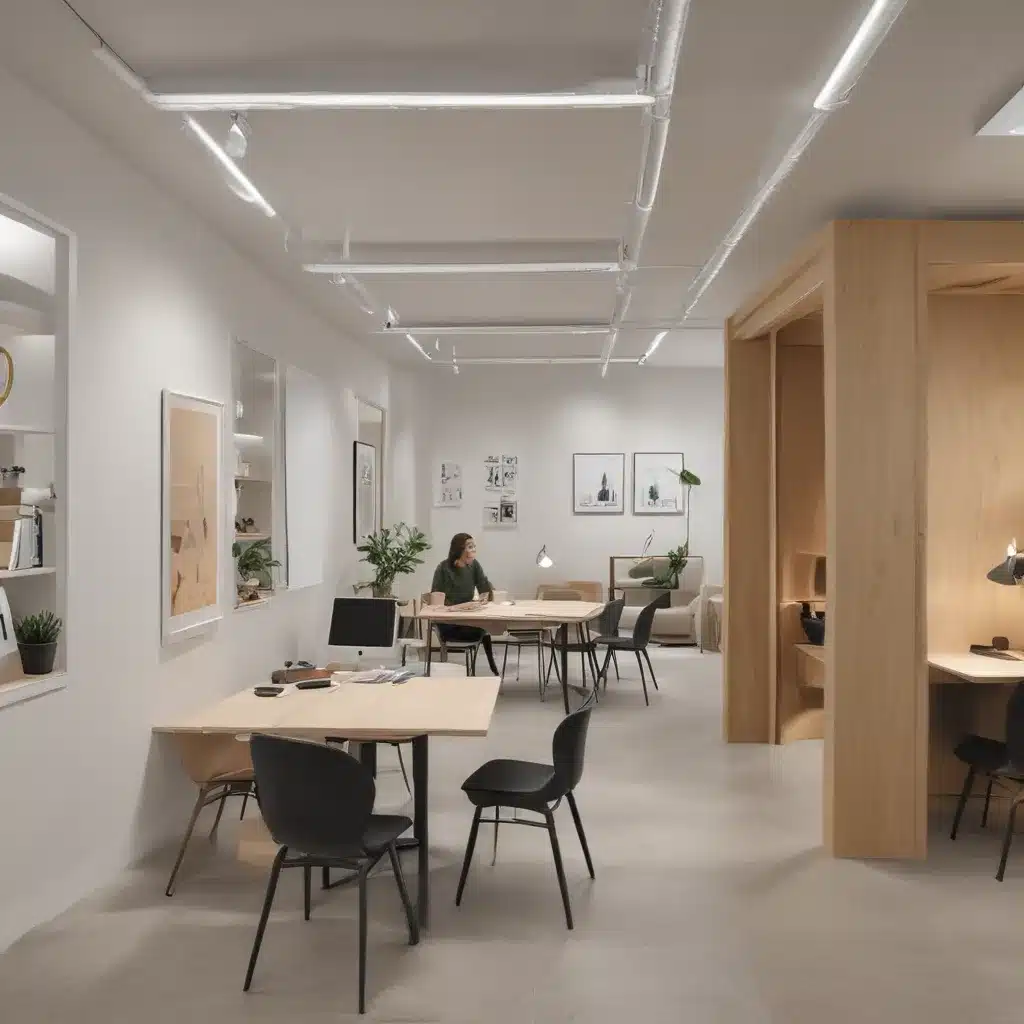
Embracing the Art of Adaptability in Your Home
As an avid homeowner and design enthusiast, I’ve always been fascinated by the idea of creating spaces that can effortlessly adapt to my ever-changing needs. After all, our lives are constantly in flux – the home office that was a sanctuary during the pandemic might suddenly need to transform into a cozy guest room, and the formal living room could become a vibrant, multifunctional hub. That’s why I’m delighted to share with you the secrets of crafting adaptable spaces through flexible design.
Modular furniture has been a game-changer in this regard. These clever pieces can be rearranged, reconfigured, or even separated into smaller elements to suit your changing needs. Imagine a sofa that seamlessly converts into a comfy guest bed, or a coffee table that expands into a dining surface – the possibilities are endless! By embracing this modular approach, you can create a truly versatile home that can morph and evolve alongside your lifestyle.
Mastering the Art of Flexible Zoning
But adaptable spaces aren’t just about the furniture – the very architecture of your home plays a crucial role. Movable partitions, such as sliding walls or folding screens, allow you to effortlessly divide and redefine your living areas. One moment, you might have a cozy reading nook tucked away; the next, you can open it up to create a bright, airy entertaining space. These flexible zoning solutions give you the power to sculpt your surroundings, ensuring they always feel tailored to your needs.
And let’s not forget the importance of storage. Clever storage solutions, like multifunctional ottomans, benches, and wall-mounted shelves, can help you keep your space clutter-free and organized. After all, an uncluttered home is the foundation for a truly adaptable one.
Embracing Color, Texture, and Nature
But adaptability isn’t just about the physical elements – it’s also about the sensory experience. Colors and textures can dramatically transform the mood and atmosphere of a space, making it feel cozy and intimate or bright and airy. By playing with these design elements, you can effortlessly shift the entire vibe of a room to suit your changing preferences.
And let’s not forget the power of nature. Incorporating plants and natural materials into your home can infuse it with a sense of life and vitality, creating a harmonious, nurturing environment. Imagine how a few strategically placed potted plants or a rustic wood accent wall could breathe new life into an otherwise static space.
The Importance of Experimentation
At the end of the day, the key to creating adaptable spaces is to embrace your inner explorer. Don’t be afraid to experiment with different layouts, materials, and design elements until you find the perfect balance that suits your unique needs and preferences. After all, the beauty of a flexible home lies in its ability to evolve and grow alongside you.
As I’ve discovered through my own design journey, the most adaptable spaces are the ones that feel truly tailored to our individual lifestyles. So why not take a page from my playbook and start infusing your home with the magic of adaptability? Whether it’s through modular furniture, flexible zoning, or embracing the power of color and nature, the possibilities are endless. And who knows – you might just discover a whole new side to your living space that you never knew existed.
Unlocking the Future of Flexible Living
As I reflect on my own experience with adaptable design, I can’t help but feel a sense of excitement for the future. Architects and designers around the world are pushing the boundaries of what’s possible, integrating cutting-edge technologies and innovative materials to create truly responsive environments. Imagine a home that can automatically adjust its lighting, temperature, and even the configuration of its spaces based on your needs and preferences – a true testament to the power of adaptability.
And as we grapple with the challenges of a rapidly changing world, the importance of adaptable design only continues to grow. Resilient, flexible buildings that can withstand natural disasters and accommodate evolving societal needs are becoming essential, not just for our personal comfort, but for the greater good of our communities.
So, as you embark on your own journey of crafting a more adaptable and flexible home, take heart in the knowledge that you’re not just shaping your own living space – you’re contributing to a larger movement that’s transforming the very fabric of our built environment. Who knows, your creativity and innovation might just inspire the next wave of adaptable design. After all, at ABC Home, we believe that the future of living is all about embracing the art of adaptability.
















